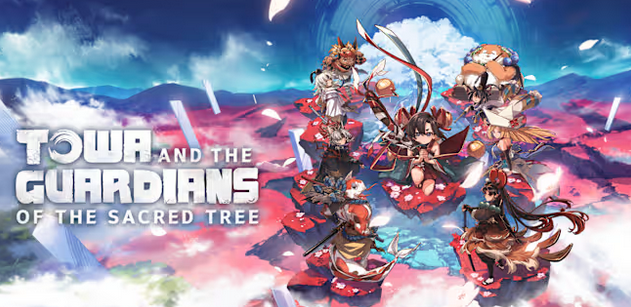In Towa and the Guardians of the Sacred Tree, you play as Towa, a priestess who must lead a group of “prayer children” to defeat the malevolent Magatsu and restore peace to her village. This narrative is not delivered in a linear fashion, but rather through character relationships and interactions with villagers in the central hub. A key emotional element is that to defeat each boss, a guardian must make a sacrifice to the Sacred Tree, which is a surprisingly heavy and impactful concept. While the overall plot can feel a bit light, the focus on developing bonds with the characters and the village makes the journey feel personal and meaningful.
The story successfully blends moments of humor with heartfelt emotion, ensuring you’re invested in the fate of your companions. The emotional bonds of characters and the fact that you must sacrifice one in order to progress the story is something that to me is a unique experience. It really helps to pull the player into the story and question or at least think about the choices being made. The game doesn’t just shoehorn this mechanic in. It does so in a way that’s methodical and gives the narrative an impactful, engaging, and rather thought provoking structure to it.

Towa and the Guardians of the Sacred Tree is an isometric action roguelite with a unique dual-character combat system. You venture into dungeons with a pair of guardians, one wielding a sword (Tsurugi) for melee combat and the other a staff (Kagura) for magical support. The combat is fast-paced and fluid, with each character having distinct weapon styles and abilities.
The game encourages you to swap between the two guardians, using their combined strengths to take down enemies. This system, coupled with the wide variety of “Graces” (temporary buffs) and sword-forging mechanics, allows for a high degree of build customization on each run. The boss fights, in particular, are well-designed and offer a satisfying challenge. While death sends you back to the village, you gain permanent upgrades and resources, making each attempt feel like progress toward a greater goal.
While I initially felt like the way the game plays was clunky and not very intuitive, the more I played, the more I understood. The balance between melee and magic being done through two different characters is not necessarily a new take, but a refreshing one. I really enjoyed the balance the game offers with the combat and the progression felt impactful; like you actually made progress instead of feeling trapped or lost in a sea of enemies over and over again.

The visuals are a standout feature of the game, utilizing a gorgeous hand-drawn art style. The character designs are whimsical and full of personality, and the environments are vibrant landscapes that feel like they’ve come to life from a storybook. The colors are bright and really give the game an artistic look. This aesthetic creates a delightful contrast with the dark themes and challenging combat. On the Nintendo Switch, the game’s performance is generally smooth, though there have been a few instances of occasional frame rate dips I experienced while playing. This was happening both while playing in handheld mode or docked on my original Switch and when playing on my Switch Lite.
For a game with so much visual flair and on-screen action, it’s a solid technical achievement. So the dips in performance and the slowdown are forgiven given the games fast mechanics and visual ascetics. The UI is also clean and easy to navigate, presenting all the necessary information without cluttering the beautiful art. I was blown away with how clean and minimalistic the game UI is. It really helps to highlight just how beautiful this game is.

The audio design of Towa is just as impressive as its visuals. The music, composed by the legendary Hitoshi Sakimoto, is a beautiful and engaging score that perfectly complements the game’s mystical atmosphere. The sound effects for combat are impactful and satisfying, from the clang of swords to the burst of magical attacks. The game also features excellent voice acting from a talented cast, which brings the characters and their dialogues to life.
The audio collectively enhances both the frantic action of the dungeons and the peaceful, story-driven moments in the village. The sound compliments the game so well that it really feels like you’re watching an animated film and not playing a video game. I mean the music alone feels like it’s taken directly from an animated film and put into this game.

Towa and the Guardians of the Sacred Tree is a truly charming and memorable roguelite that manages to stand out in a crowded genre. While its unique approach to storytelling may not appeal to everyone, its polished combat system, rewarding progression loop, and stunning art style make it an incredibly fun and engaging experience.
Fans of roguelite games that want one of the best experiences on modern platforms really need to check out Towa and the Guardians of the Sacred Tree. This is one of the best games in the genre and is a must play!
In addition to writing articles, Ryan Byers also creates content for his YouTube channel called "Obscure Games and Consoles", collects video games, and dabbles in video game development.


